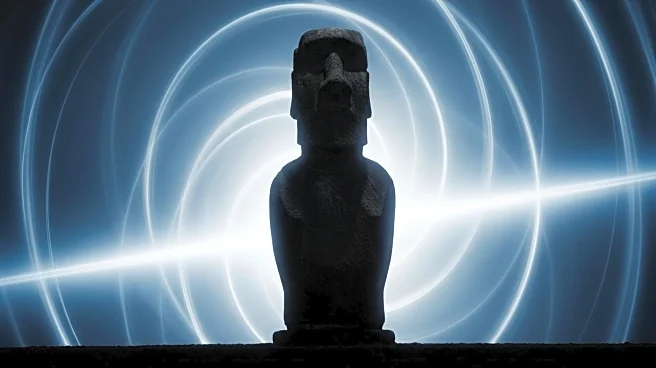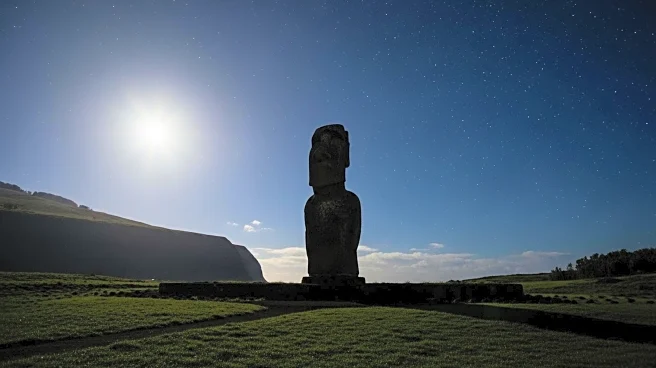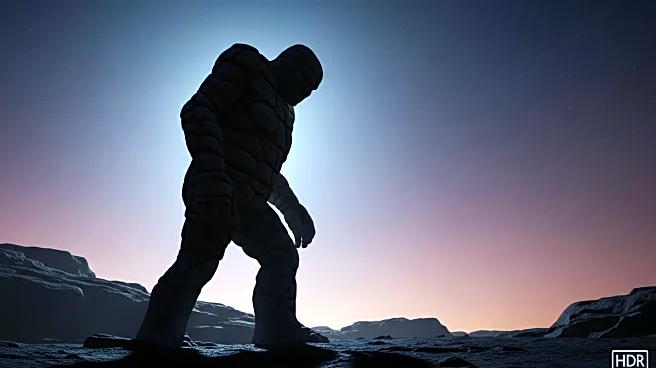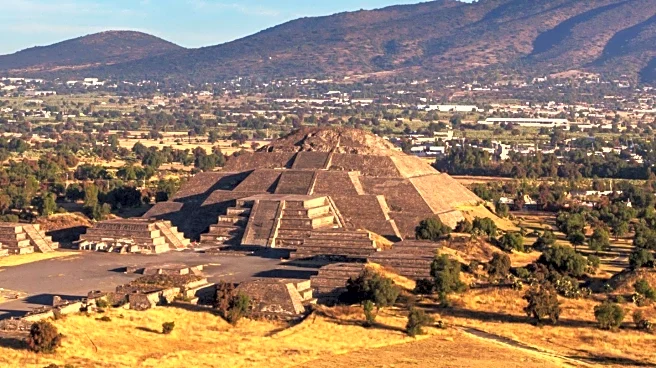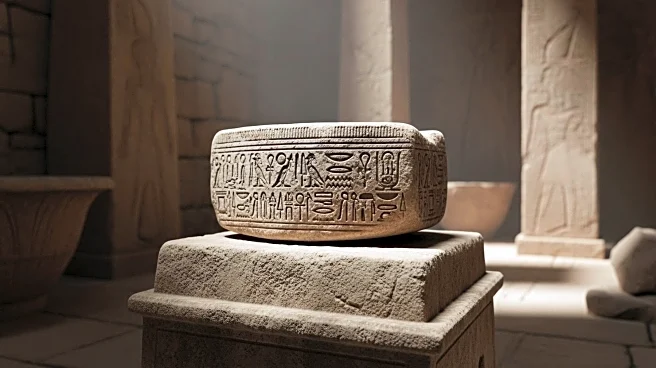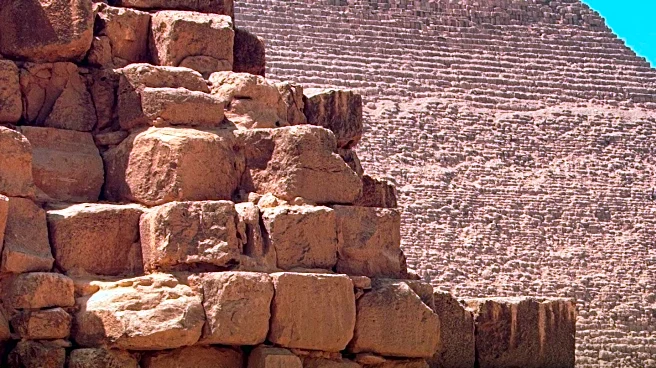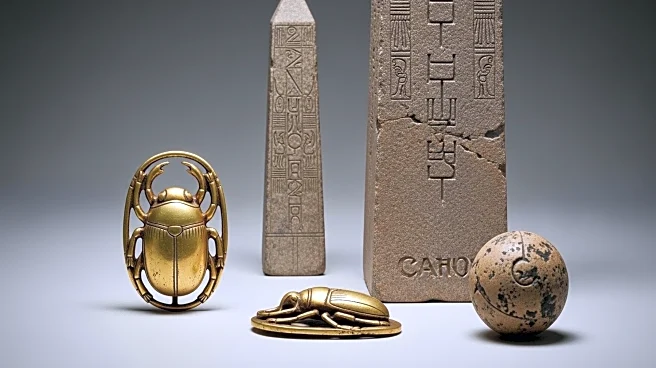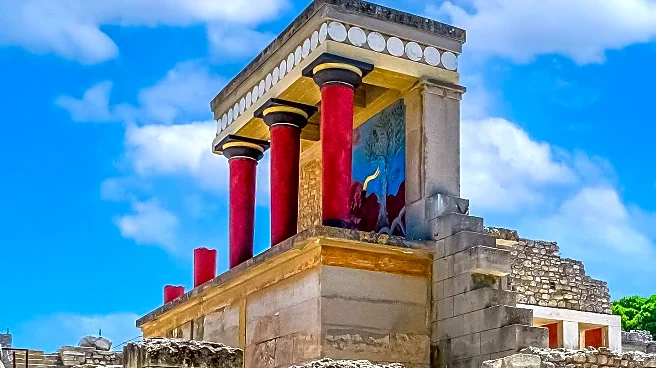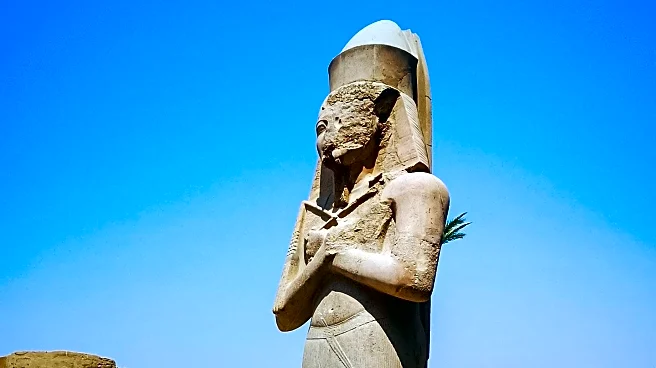What's Happening?
Researchers have solved the long-standing mystery of how the ancient people of Rapa Nui moved their iconic moai statues. A team from Binghamton University and the University of Arizona has demonstrated that the statues were 'walked' using ropes and a zig-zag motion along specially designed roads. This method was confirmed through physics, 3D modeling, and on-the-ground experiments. The study involved nearly 1,000 moai statues and revealed that the statues were moved upright, challenging previous theories that they were transported lying down. The research honors the engineering skills of the Rapa Nui people, who achieved this feat with limited resources.
Why It's Important?
This discovery sheds light on the advanced engineering capabilities of the Rapa Nui people, highlighting their ability to solve complex problems with limited resources. It challenges previous assumptions about ancient civilizations and their technological capabilities. The findings could influence how historians and archaeologists understand the development of engineering and transportation methods in ancient cultures. Additionally, it provides a scientific basis for understanding the cultural significance of the moai statues and the roads built to move them.
What's Next?
The research team encourages further exploration and testing of their findings to strengthen the argument that the moai statues were moved by 'walking.' They invite other researchers to find evidence that might challenge their conclusions. This ongoing investigation could lead to new insights into ancient engineering techniques and inspire modern applications in transportation and logistics.
Beyond the Headlines
The study not only solves a historical mystery but also honors the ingenuity of the Rapa Nui people. It highlights the importance of using scientific methods to validate historical theories and encourages a reevaluation of other ancient engineering feats. The research underscores the value of interdisciplinary approaches in archaeology, combining physics, modeling, and experimental validation.

